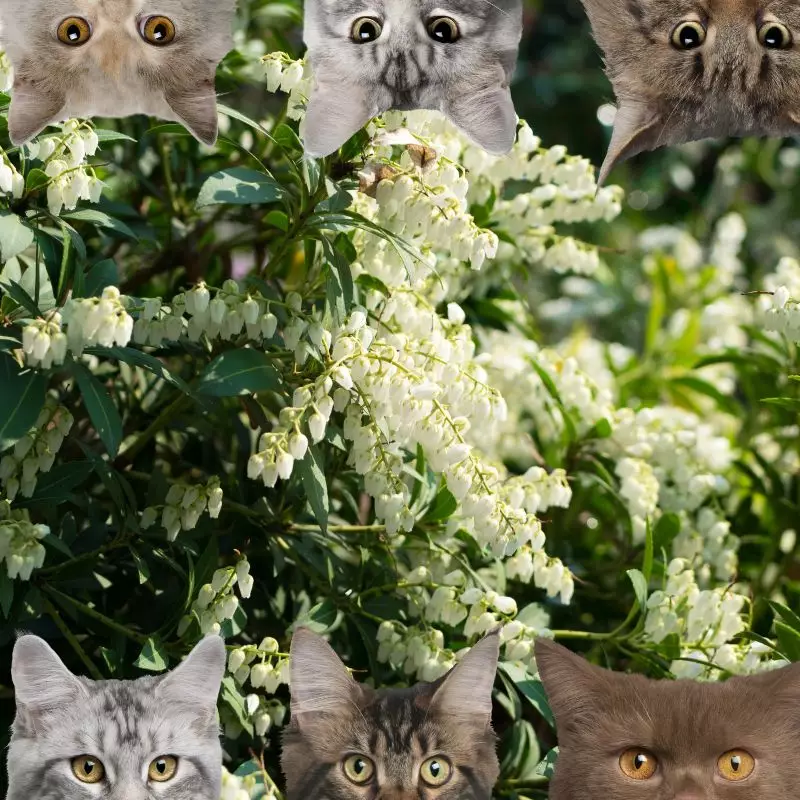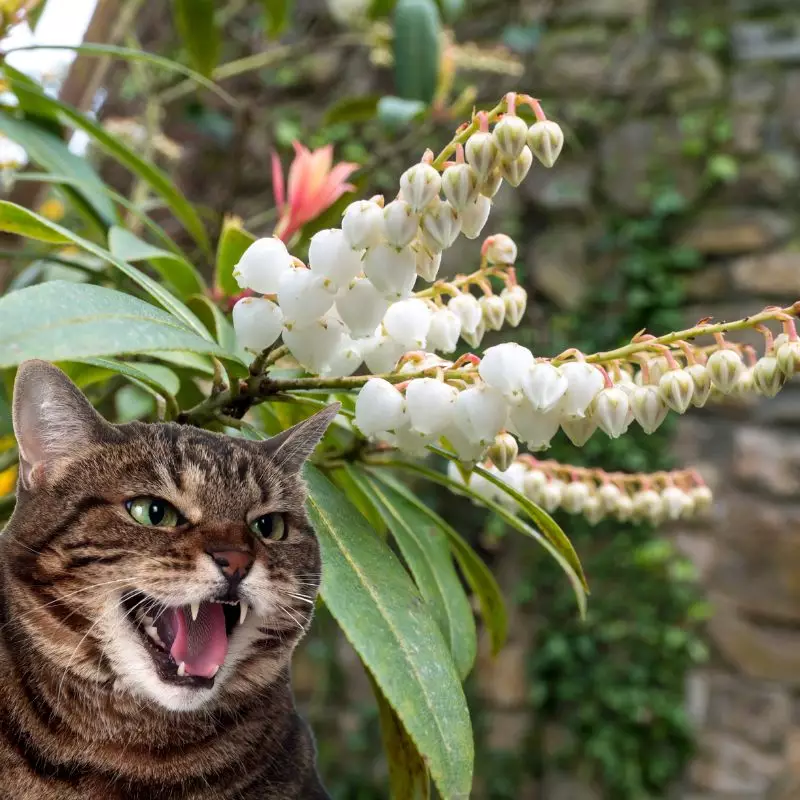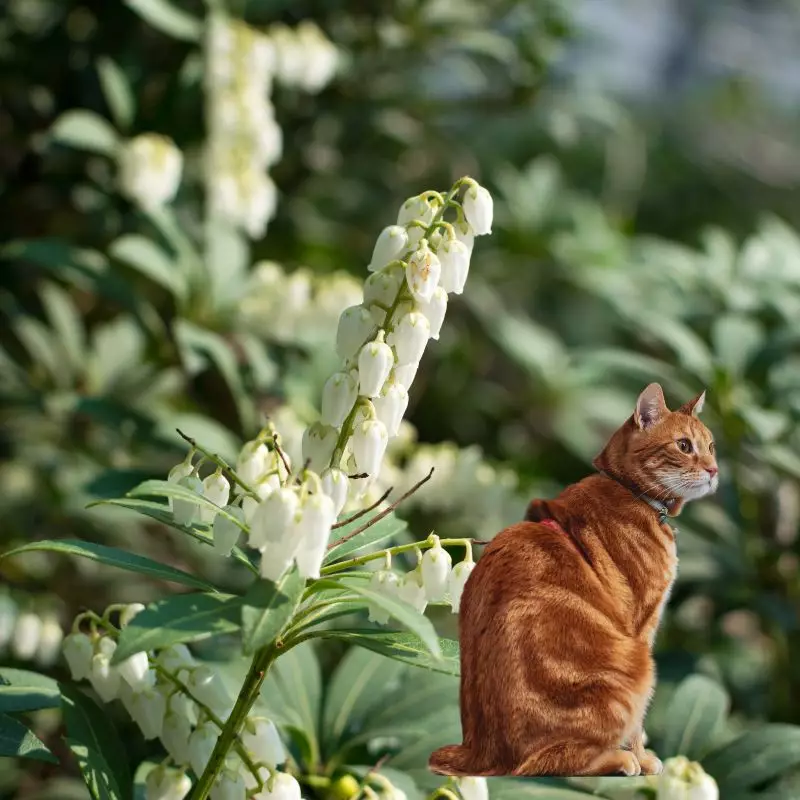Yes, Fetterbush, also known as Maleberry, is toxic to cats.
This article was written in collaboration with a team of experienced DVMs (doctors of veterinary medicine). Thanks to their invaluable insights, we can provide accurate and up-to-date information about the potential risks associated with Fetterbush and its effects on cats. Furthermore, our findings are supported by in-depth research from high-authority websites such as ASPCA and PetMD.
The Fetterbush shrub contains various toxins, with its leaves being particularly dangerous. These toxins, such as Andromedotoxin and Grayanotoxins, can disrupt the normal electrical transmission between nerves and muscles, posing a significant risk to cats when ingested.
Clinical Signs of Fetterbush or Maleberry Poisoning in Cats

When a cat comes into contact with, inhales the scent of, or ingests the Fetterbush plant, they may exhibit a range of clinical signs. Understanding these symptoms and their underlying causes can be crucial for ensuring timely medical attention:
- Excessive drooling: This is the body’s reflex reaction to eliminate or neutralize toxins. Saliva helps in washing away harmful substances and preventing them from being swallowed.
- Vomiting: This is another protective mechanism, where the body tries to rid itself of the ingested toxins by expelling them from the stomach.
- Diarrhea: The toxins in Fetterbush can irritate the gastrointestinal tract, leading to increased bowel movements as the body tries to eliminate the toxins.
- Dizziness: The neurotoxins present in Fetterbush can affect the cat’s central nervous system, leading to dizziness and impaired coordination.
- Weakness: The disruption in the electrical transmission between nerves and muscles can cause a general feeling of malaise and physical weakness.
- Twitching: Grayanotoxins present in Fetterbush target cell membranes, leading to prolonged cell excitation. This continuous stimulation can cause involuntary muscle twitches.
- Abnormal sensation in the limbs: This is a result of the toxin’s effect on nerve cells, causing tingling or numbing sensations.
- Low blood pressure: The toxins can cause vasodilation or a decrease in the force of heart contractions, leading to a drop in blood pressure.
- Sinus bradycardia: This refers to a slowed heart rate, and it can be a result of the plant toxins interfering with the electrical signaling in the heart.
If your cat exhibits any of these symptoms after coming into contact with Fetterbush or Maleberry, seek veterinary assistance immediately.
First Aid and Treatment of Fetterbush or Maleberry Poisoning in Cats

Symptomatic and supportive care therapy are the most common treatments for fetterbush poisoning in cats. Intravenous fluids may be administered to flush the poison from the cat’s bloodstream via the urinary system. If the veterinarian feels it necessary, the cat may be given oxygen therapy to help with respiratory problems. Because the toxins in the fetterbush plant target essential involuntary muscles like the heart, the veterinarian may also use atropine or a sodium channel blocker to prevent the toxin from disrupting the electric current between the cells.
Recovery from Fetterbush or Maleberry Poisoning in Cats

If the feline was treated by a veterinarian, he or she should start to feel better within a few hours and recover completely within nine to 24 hours. The prognosis for cats poisoned by fetterbush is highly dependent on the amount of plant matter ingested.
Prevention of Fetterbush or Maleberry Poisoning in Cats
Whether you have a fetterbush at home or not, poisoning is still possible whenever your cat goes outside. It is better to keep your cat in a cat house or playpen especially when you are leaving the house.
If you love plants but have cats at home, check out these lists:





